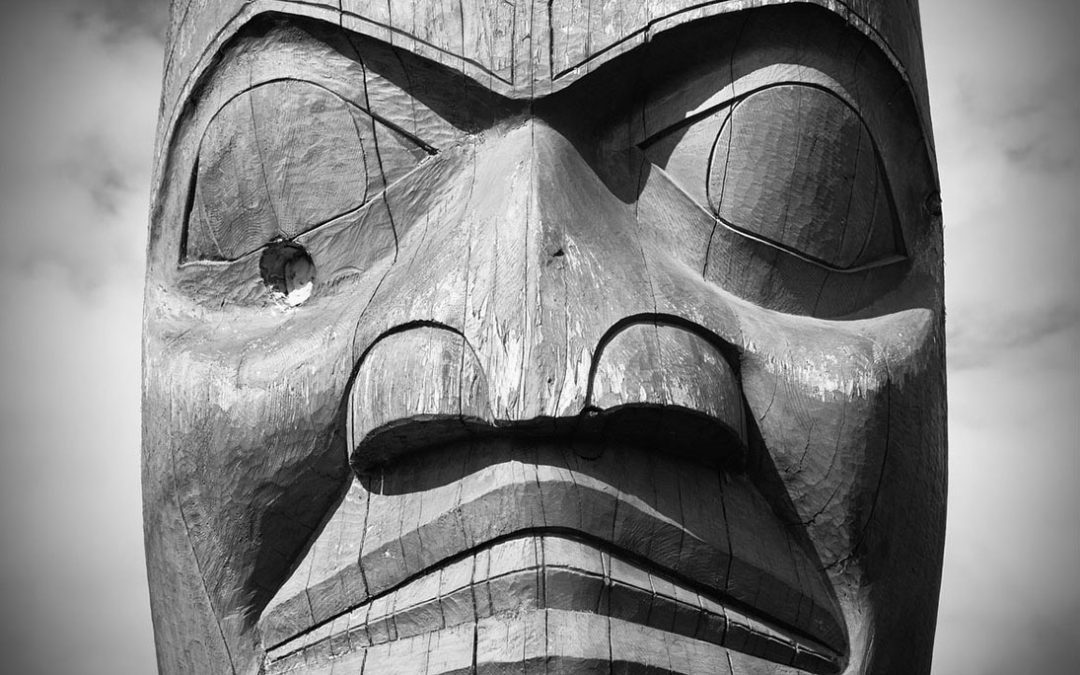Gitanyow Calls For Immediate Action After Decades of Waiting To Resolve Land Claim
The Gitanyow Nation asserts that the Nisga’a Nation rewrote history and the government turned a blind eye, perpetuating a decades-long struggle for justice with the signing of the Nisga’a Final Agreement.
“The Nisga’a greatly expanded their land claim closer to their settlement date so the return of their true traditional territory would be larger,” says Simogyet (Hereditary Chief) Malii.
“Government and Nisga’a benefit from Gitanyow’s ancestral lands while the consequences of disregarding traditional laws and rights have had long-lasting effects that we have felt for generations. This cannot continue, this perceived overlap must be resolved.”
Leading up to the signing of the Nisga’a Final Agreement in 2000, the amount of land claimed by the Nisga’a increased nearly fivefold in thirty years; representing an 84% overlap of Gitanyow territory. Despite Gitanyow’s loud and legal protests of Nisga’a’s ever-expanding boundary, British Columbia’s first modern-day treaty was signed and celebrated.
Three key policies harmed Gitanyow and other First Nations during the treaty-making process:
1. Canada only negotiated one treaty at a time, ignoring all overlap concerns, and Nisga’a was the first in line for negotiations.
2. There was no prerequisite for Nisga’a to prove the extent of their land claim nor to resolve the overlap.
3. B.C. publicly stated that they wouldn’t return more than 5% of traditional territory to be exchanged back to the First Nation in a treaty.
Although Minister John Cashore promised Gitanyow that the Nisga’a treaty would not impact hunting and fishing rights, the failure of the provincial and federal governments to respond to the many Gitanyow submissions on overlap had severe consequences:
1. Nisga’a were granted by the federal and provincial governments fee simple lands in Gitanyow territories.
2. They obtained fisheries management over the whole Gitanyow Nass territory.
3. A “treaty right to hunt” in the entire Gitanyow Nass territory.
4. An extensive commercial recreation tenure in Gitanyow territory.
5. The Nisga’a gained symbolic government recognition for their claim to the Nass Watershed.
6. And recently, the interpretation of the Nisga’a treaty was expanded, adding subsequent agreements that further harm Gitanyow.
On many occasions since 1968, Gitanyow and Gitksan leaders met with the Nisga’a in hopes of resolving the overlapping claim to the middle Nass Watershed. Gitanyow and Gitksan asked for a mediator to review the issue, but the Nisga’a rejected all requests.
Today, Gitanyow continues to pursue a mediated discussion between Nisga’a, B.C. and Gitanyow.
“Once their treaty was signed, the Nisga’a had no motivation to mediate,” says Joel Starlund, Executive Director of the Gitanyow Hereditary Chiefs’ Office.
“But we are hopeful that Canada’s new era of reconciliation will hold true, that changes will be made to the British Columbia treaty-making process and that Nisga’a and B.C. will meet to discuss both of our Nations’ futures in the Nass.”
Gitanyow calls for immediate action, emphasizing key changes that are needed in the treaty-making process:
1. Implementation of Tŝilhqot’in Aboriginal title case decision: The treaty-making process should draw guidance from the Supreme Court of Canada Tŝilhqot’in Aboriginal title case decision. Implementing the test for title is crucial to substantiate boundaries.
2. Resolution of Territorial Overlaps: Gitanyow urges that territorial overlaps must be resolved before entering into treaty negotiations. Failure to address such overlaps perpetuates historical injustices and hinders meaningful reconciliation.
3. Binding Third-Party Process: In cases where Indigenous parties cannot resolve an overlap, Gitanyow advocates for the incorporation of a binding third-party process. This ensures fairness and equity in resolving disputes, upholding the principles of justice and reconciliation.
Gitanyow Nation invites the media to shed light on this critical issue and join in the call for changes to ensure a fair and inclusive treaty-making process.
To learn more, please read Gitanyow’s detailed presentation, ‘Gitanyow & Nisga’a: Territorial Overlap’ with historical testimony and maps.
###
The Simigigyet’m Gitanyow (Gitanyow Hereditary Chiefs) are an innovative, traditional Indigenous government mandated to protect Gitanyow Nation’s lands, resources, and laws. The Gitanyow have never ceded or surrendered title to their lands, rights to their resources, or the power to make decisions within their Lax’yip (Territory). The Gitanyow Hereditary Chiefs’ goal is to establish government-to-government agreements that form the foundation of a modern-day treaty through an incremental treaty approach. In 2012, the Gitanyow Hereditary Chiefs and the province of British Columbia signed the Gitanyow Lax’Yip Land Use Plan to guide all industrial activity. Gitanyow Nation is part of the larger Gitksan Nation, encompassing 6,200 square kilometres in the Nass and Skeena Watersheds (Kitwanga and Kispiox Rivers).
Learn more by visiting gitanyowchiefs.com and following @gitanyowchiefs on Instagram.
